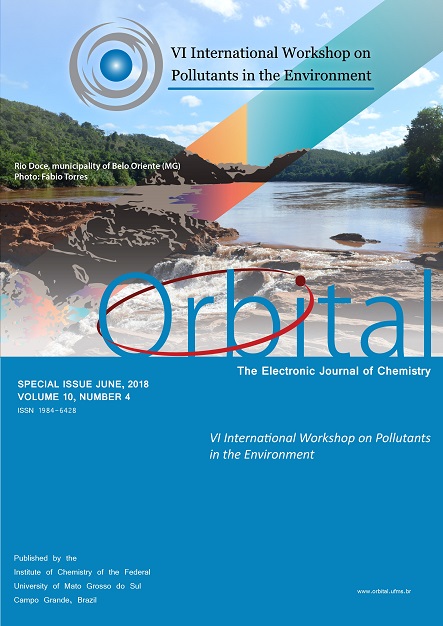- aquatic ecotoxicology,
- environmental toxicology,
- heavy metal,
- persistent organic pollutant,
- pollutants
- trophic transfer ...More
Copyright (c) 2018 Orbital: The Electronic Journal of Chemistry

This work is licensed under a Creative Commons Attribution-NonCommercial-NoDerivatives 4.0 International License.
Abstract
Studies have evaluated the dynamics of pollutants at the base of the food chain to understand the contamination in the high levels of the trophic food webs (as fishes and humans). The base of the food chain, especially for those pollutants that biomagnifies, represents the beginning of the contamination of the trophic web. Those studies were possible from the last decades due to more precise analytical techniques. Studies have used mainly the zooplankton since this group has an important function in the transfer of matter and energy from phytoplankton, bacteria and materials (e.g.; inorganic sediments, organic matter in decomposition). These organisms can also transfer toxic substances to higher trophic levels since some pollutants can bioaccumulate in the zooplankton and biomagnify through food web. Therefore, understanding the role of plankton in the uptake of pollutants is fundamental to comprehend their concentrations in the food web.

